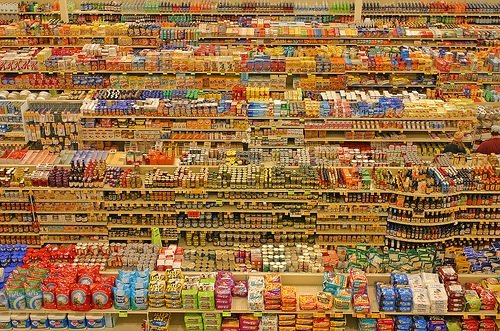Smart shopping saves you money. And who wouldn’t want to save money when it seems like the cost of everything keeps going up. Some people believe the best way to save money is to grab the biggest size, family size or big ‘un for the lowest price.
But when you look a little closer you may be surprised to see you’re actually paying more money for the bigger size. Believe it or not, it’s true sometimes the smaller size is cheaper.
Just the other day I noticed a woman at the grocery store trying to decide what size of cheese to buy. They were both the same brand and on sale. The 16 oz. bag of cheddar cheese was $1.88 and the larger 32 oz. bag was $4.49. After a few moments she made her decision and grabbed the bigger bag.
Before she walked away, I stopped and asked her if she noticed the 16 oz. bag was only $1.88. She told me that she did, but decided to go with the larger bag. I then explained that if she bought two 16 oz. bags at the lower price, she would be paying less than $2 for each bag. That’s the same amount of cheese for less than $4 ($3.76 to be exact). She thanked me and put the larger bag back and got two of the smaller bags instead.

What’s a shopper to do to make sure you’re paying the lowest price? Well, some stores are nice enough to put the cost measurement below the item. So you can easily see if the bigger size is really the better value. For example, those chips may cost .027/oz. for the smaller size and .020/oz. for the larger size. Depending on your needs and the expiration date clearly the cheaper price per ounce is the bigger bag of chips.
Be careful if you decide to use the store’s calculation because sometimes the manufacturer will give you 20% more free and the store calculation may not take the additional amount free into account.
Is the biggest box the real deal? Show me the calculation…
I remember back when I used to shop for diapers. I’m glad those days are behind me. But back then I used my calculator (or should I say my cell phone) to find out which box of diapers was the least expensive. Now, I did not say the cheapest, because my husband and I only bought certain brands of diapers.
To calculate the cost per diaper, I took the price of a box of diapers divided by the number of diapers. If I had a coupon, I would simply take the price of diapers and subtract the coupon amount, then divide by the number of diapers. That’s the easiest way to find out which size is the best value for your money. And it works whether you’re buying diapers or ketchup.
As mathematical equations:
- Price per Unit = Total Price / Unit of Measure
- Price per Unit = (Total Price – Coupon) / Unit of Measure
To calculate the price per oz. on the bags of cheese above, you’d use the price and unit of measure:
$1.88 / 16 oz. = $0.1175/oz. (the lowest price)
$4.49 / 32 oz. = $0.1403/oz.
Here are a few helpful articles to walk you through calculations:
- Personal Finance 101: Grocery Store Math – This article breaks it down and walks you through step-by-step on how to enter the numbers in the calculator.
- How to Calculate Unit Price – This one takes you back to school with unit of measure conversions.
Do you have any other tips to add?
Photo: lyzadanger



